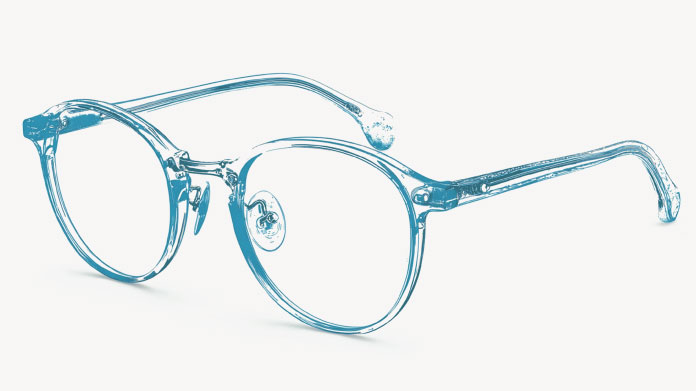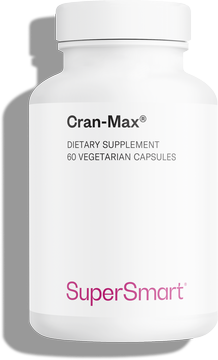7 everyday tips for maintaining good eye health
Modern lifestyles tend to encourage eye fatigue. Yet scant attention is paid to ways of maintaining the health of this fragile organ for as long as possible. Read on to discover natural solutions to safeguarding your sight.

Learn to take visual breaks
As the saying goes, ‘prevention is better than cure’, and the first step to take in caring for your eyes naturally is to give them some screen-free time. But how exactly are screens bad for our eyes?
The blue light they emit attacks the retina and reduces the frequency of blinking. This causes fatigue and dry eye which is uncomfortable, if not painful.
It’s therefore important to take regular breaks and to get some exposure to daylight to compensate for this adverse effect. In addition, if your device offers the option of controlling the type of light diffused by the screen, you could choose a warmer one. Other options are to wear glasses that block blue light and to make use of eye drops.
The bilberry, an excellent fruit for the eyes
Enjoying a bowl of bilberries in summer is not only a treat for your tastebuds, but one for your eyes too! They contain a significant level of anthocyanins, antioxidants that benefit eye health.
It’s thought that bilberries help to stabilise collagen levels in the eye, promote visual clarity and maintain retinal function (1).
To increase your intake, you could take a bilberry supplement (such as Bilberry Extract, made from wild bilberries and standardized to 25 % anthocyanins). You could also choose a formulation like Eye Pressure Control, which contains other beneficial compounds in addition to bilberry extract.
A little workout to relax your eyeballs!
It’s true – your eyes can also benefit from a little exercise! Repeating a few eye movements every day will help relieve visual fatigue, especially that caused by screen exposure. Here are two simple exercises to try:
- contour of objects: have fun by tracing the contour of small objects placed in front of you as if you were drawing them with your eyes. You can extend this with a convergence exercise. Alternate your focus between an object 20cm from your face and one further away. As you look at one, the other becomes blurred.
- big circle: make clockwise, and then anti-clockwise, circles with your eyes as if you were tracing a large circle in front of you. Keep your head still and concentrate on moving just your eyes. This exercise works all the muscles in your eyes at the same time.
Vitamin A, essential for eye health
Vitamin A helps maintain normal vision. In particular, it supports daily replacement of cells and helps the conjunctiva, the mucous membrane which protects the eye, to produce sufficient mucus. (2).
Vitamin A is found in many foods: dark green leafy vegetables such as spinach, as well as carrots, squash and other orange-colored fruits and vegetables.
In terms of animal-source foods, include eggs and liver in your diet on a regular basis for extra vitamin A. For optimal absorption, vitamin A needs fatty acids, so add a drizzle of oil to your dishes.
To ensure a higher intake of vitamin A, you could also take a dietary supplement (such as Carottol), or the synergistic formulationOptivision which contains both an extract of bilberry as well as retinol, a form of vitamin A.
Protect your retinas and lenses from UV rays
Your skin is not the only part of your body to be vulnerable to UV damage. Prolonged, repeated exposure to UV rays can also have adverse effects on the health of your eyes (3).
For effective protection, wear good quality sunglasses with an adequate level of protection. For driving, choose sunglasses with category 3 protection, the maximum authorized. For mountain walks where sunlight and glare are especially intense, it’s best to go for the highest protection, category 4. .
Benefit from omega-3
Known for their heart health properties, omega-3 fatty acids also have an effect on the eyes! One of them, DHA, helps to maintain normal vision. It is highly concentrated in the retina, and more specifically, in the membranes of the rod outer segments of photoreceptor cells (4).
DHA is primarily found in fish and seafood: salmon, tuna, sardines, mackerel, sea bream, shrimps, etc. Another way of increasing your intake is to take a DHA supplement (such as the fish oil-based Super DHA.
Practise palming to relieve eye fatigue
Palming is a simple measure you can do several times a day, wherever you are, both day and evening. How is it done?
Simply place the cupped palms of your hands over your eyes for a few minutes and relax completely. Do this exercise in a seated position with your elbows on the table and your head resting in your hands. For greater comfort, rub your hands together before placing them on your eyes. The gentle warmth acts to relax your eyes deeply, thus helping to protect them.
References
- Chu W, Cheung SCM, Lau RAW, et al. Bilberry (Vaccinium myrtillus L.) In: Benzie IFF, Wachtel-Galor S, editors. Herbal Medicine: Biomolecular and Clinical Aspects. 2nd edition. Boca Raton (FL) : CRC Press/Taylor & Francis ; 2011. Chapter 4. Available from: https://www.ncbi.nlm.nih.gov/books/NBK92770/
- Gilbert C. What is vitamin A and why do we need it?. Community Eye Health. 2013;26(84):65.
- Impact cutane et oculaire des rayonnements UV et photoprotection — P0232008 — 2008 — http://hdl.handle.net/123456789/14731
- Hodge W, Barnes D, Schachter HM, et al. Effects of Omega-3 Fatty Acids on Eye Health: Summary. 2005 Jul. In: AHRQ Evidence Report Summaries. Rockville (MD): Agency for Healthcare Research and Quality (US); 1998-2005. 117. Available from: https://www.ncbi.nlm.nih.gov/books/NBK11888/
Keywords
1 Days
Great customer service - responsive …
I ordered from them and my item was unavailable for sometime. I was super happy when they reactivated my order and shipped my item which arrived very quickly. Great customer service.
Ruth Rueter
2 Days
Super fast shipping
Super fast shipping
Donald Borling
5 Days
Reputable companysearch and the number of…
The research and the number of selection of products.
NAKHJAVAN Shervin
18 Days
The Anti Aromatase is a great product
The Anti Aromatase is a great product. You just need to have constant inventory. Recently this product has been out of stock.
GEORGE Verne
20 Days
Great help on chat
Great help on chat. Knowledgeable and friendly.
Jason Argos
23 Days
Customer service was fast and friendly.
Customer service helped to stop the transaction process of the subscription. I appreciated that.
Greenie
24 Days
I order here due to the high quality of…
I order here due to the high quality of the products and the quick delivery of items - thank you
Barbara J
25 Days
SuperSmart's Eye Pressure supplements: highly recommended!
I purchase SuperSmart's Eye Pressure supplements regularly for over 5 years, and gotta say they are truly a wonderful product for my Glaucoma. Highly recommended if you have eye pain from your Glaucoma.
D. Martinez
30 Days
Quick service
Quick service
MONELL
30 Days
Speedy service.
Speedy service.
ROSENTHAL Marvin
34 Days
Clear website- Efficient
Clear website. Excellent search engine and fast delivery!
Mohamad Hussein
37 Days
They have great products.
They have great products.
Vickie
37 Days
Great Shipping Time!
You Have A Great Shipping Time! Praise The Lord!
DMHoge
39 Days
Doctor Recommended!
Good pricing, very good availability, doctor recommended (couldn't find what I needed anywhere else), and it took only a week to arrive (which I can't complain about).
Al
39 Days
Great product and fast shipping
Great product and fast shipping
Marie





